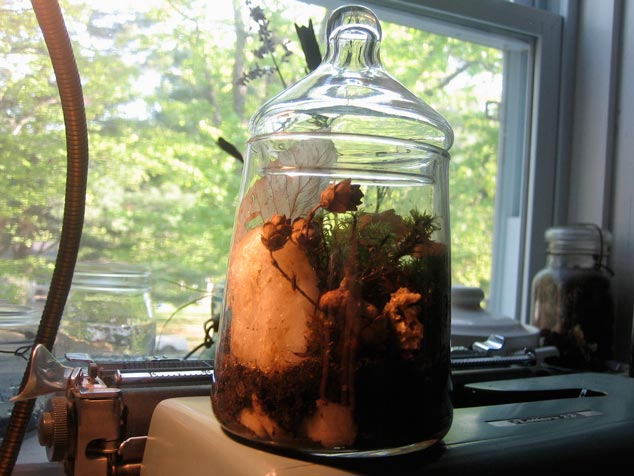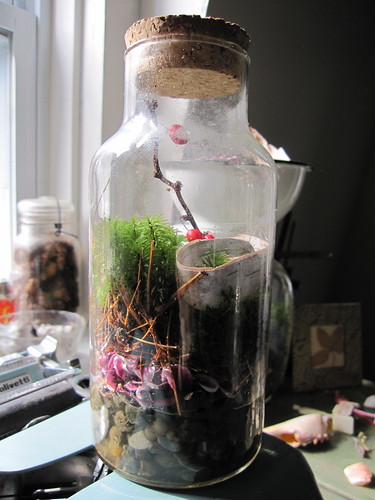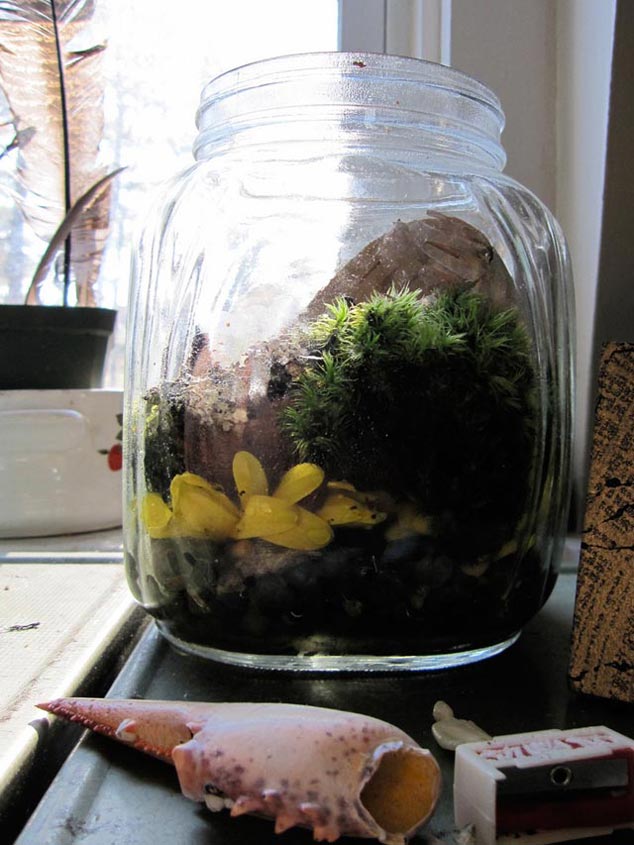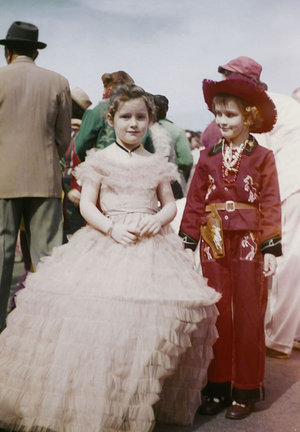The Latest from Boing Boing |  |
- Cuddle Class couches come to coach on Air New Zealand
- PUPPETS ARE FUN
- UK iTunes customers get better terms of service than US suckers
- Rogers Canada forces Android update that takes away root access
- Brits: write to your MP, get transparency on secret copyright treaty!
- Canadian MP demands answers on secret copyright treaty
- Science Question from a Toddler: The color of light
- The longest-running open source project: US Federal Depository libraries
- Visual representation of global aid to Haiti
- Guerrilla bridge-makers save New Yorkers from scum river
- Sane copyright doesn't treat all copying as the same
- Journal of Serendipitous and Unexpected Results
- Make your own mossarium!
- Sophie Madeleine limited edition print, LP, and download package
- Historians on the hunt for frozen, 86-year-old camera
- EU investigating legality of Virgin ISP spying on its customers for copyright
- ACTA: the leaked secret memos
- Kids' TV hosts terrorism-stopped for pew-pewing with sparkly hair-dryers
- Wildlife photographer cheats with tame wolf
- Solar power, courtesy tobacco and E. coli
- Mardi Gras 1956: "Through my father's lens" (Boing Boing Video)
- Walking Dead 11: zombie comic is a parable about the ethics of survival and disaster
| Cuddle Class couches come to coach on Air New Zealand Posted: 27 Jan 2010 02:44 AM PST  Air New Zealand has created a "cuddle-class" seating arrangement in its coach cabins: a couple can purchase three seats abreast for a small premium (an extra 25% per passenger), whose footrests come all the way up to the seats in front, forming a lie-flat couch where fliers can recline together. This is also a nice arrangement for parents flying with small kids. Developed in-house by the airline's designers and engineers, the 22 "Skycouches" will take up the first 11 rows in the economy cabin of the carrier's new Boeing 777-300 planes, and will be formed out of three economy seats abreast that fold out to create a lie-flat space (complete with full size pillows) stretching right up to the seats in front. The increased space could also provide a valuable play and sleep area for those travelling with small children. For two adults travelling, purchasing the Skycouch will be based on buying two seats at standard prices with the third seat at approximately half price. Full airfare details will be announced when it goes on sale in late April.Air New Zealand unveils first lie-down economy bed Air NZ's new SkyCouch in action Previously:
|
| Posted: 26 Jan 2010 07:36 PM PST The Bob Baker Marionette Theater (previously) is celebrating their 50th Anniversary all year. The Bob Baker theater, the longest running theater of its kind in the US, is the only surviving puppet theater in downtown Los Angeles which was home to thirty puppet theaters in the 1930's. Bob Baker bio & interview for the DVD release of Pinocchio.
|
| UK iTunes customers get better terms of service than US suckers Posted: 26 Jan 2010 10:16 PM PST The Electronic Frontier Foundation's Ed Bayley has a great article up explaining how superior consumer protection laws in the UK mean that iTunes customers get a substantially better deal than their US counterparts (though the UK terms leave much to be desired): Terms of (Ab)Use: US and UK Consumers Dance to Different iTunes Previously: |
| Rogers Canada forces Android update that takes away root access Posted: 26 Jan 2010 10:11 PM PST Rogers, Canada's only carrier with Android handsets, has cut off data to customers until they run a mandatory firmware update. Nominally, this fixes a 911 bug: but it also prevents you from jailbreaking your phone and activating features and applications Rogers doesn't like (even if you paid full price for your phone). Canadian Android Carrier Forcing Firmware (via /.) Previously:
|
| Brits: write to your MP, get transparency on secret copyright treaty! Posted: 26 Jan 2010 10:03 PM PST UK MP Don Foster has presented an Early Day Motion demanding that the UK government disclose the substance of the secret copyright treaty negotiations in Guadalajara, Mexico. Write to your MP and ask that s/he support "Early Day Motion 700." Let's drag the Anti-Counterfeiting Trade Agreement out of the smoke-filled room and into the sunshine! That this House is deeply concerned by the secrecy surrounding international negotiations on the Anti-Counterfeiting Trade Agreement (ACTA); notes that any agreement reached could affect the measures to protect copyright online currently being debated in the Digital Economy Bill; believes that if the companies affected by the agreement are party to the discussions and able to influence decisions, parliamentarians who represent the public and are responsible for legislation in these areas should also be kept up-to-date with developments and be able to contribute to the debate; seeks assurances from the Department for Business, Innovation and Skills that the provisions of the Digital Economy Bill will not be superseded by ACTA; and urges the Government to work to achieve release of details of the negotiations to hon. Members as soon as possible.PROPOSED INTERNATIONAL ANTI-COUNTERFEITING TRADE AGREEMENT Previously: |
| Canadian MP demands answers on secret copyright treaty Posted: 26 Jan 2010 09:54 PM PST Canadian MP Charlie Angus -- a successful musician, the former front-man for punk legends L'Etranger -- has stood up in Parliament to demand that Prime Minister Harper and Minister of Foreign Affairs and International Trade Peter Van Loan explain exactly what the hell they think they're doing negotiating a secret copyright treaty without Parliamentary oversight or input from Canadians. Remember, this is the government that is meant to be working to design a copyright law based on an unprecedented public commission on copyright, where thousands and thousands of Canadians told government what they wanted from their national copyright law. The secret copyright treaty -- ACTA, the Anti-Counterfeiting Trade Agreement -- contains provisions for border searches of laptops and personal media players, asks ISPs to spy on their users, and requires signatory nations' ISPs to disconnect the households of Internet users who are accused of copyright infringement. It is presently being negotiated in Guadalajara, Mexico, in smoke-filled back rooms that are off-limits to the press, the public, public interest groups, independent copyright and trade experts, independent copyright creators -- just trade negotiators and representatives from big business are allowed to know what's going on. 1) First and foremost, why the secrecy? When the original WIPO treaties were being negotiated, the draft of texts were posted online and made available by Industry Canada. The federal government invited submissions on the process being undertaken.ANSWERS NEEDED ON SECRET ACTA TALKS Previously:
|
| Science Question from a Toddler: The color of light Posted: 26 Jan 2010 05:22 PM PST  Why does a glow-in-the-dark Frisbee glow green? Why does a spark from a light socket look blue? Two different questions, but one intertwined answer. Hopefully, readers Inga Foster—who asked about electricity—and Stewart Haddock—the man with the glow-in-the-dark query—don't mind being lumped together. As it turned out, they were really asking about the same thing. Both these phenomena stem from the weird ways light interacts with atoms. Yes, we're talking about physics today. But don't worry. If I can understand it, you can understand it. In one corner, we have the atom. You know this guy. He's the basic building block of everything, everywhere. Tinier than tiny. But also very powerful. Each atom has a nucleus—a ball of particles that carry positive and neutral electrical charges—and is circled by electrons, particles with a negative electrical charge. In the other corner: Electromagnetic waves. What these waves do depends on their frequency—how fast they vibrate. High-frequency waves bring light to our eyes, and determine what colors we see. There's a range of frequencies that can produce visible light, and we perceive the different frequencies as different colors. It goes on a gradient, like a rainbow. We see higher pitched waves as blue, lower pitched ones as red and the other colors fall somewhere in between. The waves can also be so high frequency or low frequency that our eyes can't see them at all, and that's where you get into things like ultraviolet and infrared light. Now, say you're a little atom, just hanging out, minding your own business, when you're hit by some form of energy. You can absorb some of that energy, but not all of it.
Glassner is a former research scientist who designed computer graphics algorithms to produce true-to-the-real-world simulations of lightning and glow-in-the-dark objects in the 1990s and 2000. To get the models to work correctly, he had to study the physics behind the phenomena and incorporate that into the algorithms.
The atom spits out electromagnetic waves of a specific frequency depending on its charge and mass—which means that different atomic elements have different characteristic colors.
Them's the basics. But how does this play out for electric sparks and Frisbees?
What we see as blue light from an electric spark is simply the result of nitrogen atoms absorbing electrical energy, and spitting some back out in the form of electromagnetic waves—waves which, to us, happen to appear blue. In fact, electricity doesn't always appear blue. The center of a spark, and lightning, both appear white. That's because when you hit an atom with higher levels of energy it will release waves of several different frequencies. Our eyes perceive each frequency as a different color—and white is just the color we see when we see lots of colors merged together. The Frisbee work much the same way. Zinc sulfide is a cheap, naturally occurring chemical compound. About a century ago, people realized that if you took zinc sulfide and exposed it to light energy it would absorb some of that light, but also, slowly, spit light back out over several hours. The atoms that make up zinc sulfide happen to spit out their waves at an frequency that, to us, appears ghostly green. There's lots of other natural and man-made chemicals—called phosphors—that will do this, and in different colors. Glow-in-the-dark can really be any color you want these days. But zinc sulfide was the one that was put on watch hands, exit signs and (yes) Frisbees for much of the 20th century. So, really, the reason we think of glow-in-the-dark as green is more of a cultural thing, than a fact of science. Image courtesy Flickr user methticalman, via CC Previously:
|
| The longest-running open source project: US Federal Depository libraries Posted: 26 Jan 2010 11:45 PM PST  The Federal Depository library Program (FDLP) is a geographically dispersed network of 1250 libraries around the US who for over 150 years have worked with the Government Printing Office (GPO) to insure that government information is deposited in local libraries and freely available to everyone. FDLP libraries have also assured the authenticity of government information through this distributed system. Documents librarians have long been advocates for government transparency, freedom of information, privacy and civil liberties (freedom to read etc). The Federal Depository library Program (FDLP) is a geographically dispersed network of 1250 libraries around the US who for over 150 years have worked with the Government Printing Office (GPO) to insure that government information is deposited in local libraries and freely available to everyone. FDLP libraries have also assured the authenticity of government information through this distributed system. Documents librarians have long been advocates for government transparency, freedom of information, privacy and civil liberties (freedom to read etc).
While the concept of a distributed system can be applied perfectly to the digital world (think napster for govt information!), the FDLP network is being threatened by the very idea that the FDLP is a print concept only. With digital deposit, harvesting, bulk data, open standards etc, we can continue the FDLP to assure the distribution, access to and long-term preservation of government information. Contact your local FDLP librarian and tell them you support a distributed digital FDLP. Further reading:
Images from the completely great Best Titles Ever project. |
| Visual representation of global aid to Haiti Posted: 26 Jan 2010 05:13 PM PST  Using statistics from Reliefweb, GOOD Magazine has created a neat interactive infographic that shows who has given aid (money and resources) to Haiti so far.* Haitian Aid (GOOD) |
| Guerrilla bridge-makers save New Yorkers from scum river Posted: 26 Jan 2010 09:34 AM PST Post sez, (Thanks, Post) Previously:
|
| Sane copyright doesn't treat all copying as the same Posted: 26 Jan 2010 09:12 AM PST My latest Guardian column, "Copyright, companies, individuals and news: the rules of the road," is a start on a coherent framework for a copyright system that recognizes the difference between commercial use and non-commercial use, incidental copying and unfair copying, and many of the other exceptions that copyright needs to keep from devolving into a stupid caricature of itself: Copyright, companies, individuals and news: the rules of the road (Image: Breach of Copyright - The Independent, from PeteZab's photostream) |
| Journal of Serendipitous and Unexpected Results Posted: 26 Jan 2010 08:24 AM PST Now, here's a goddamned cool scholarly venture: The Journal of Serendipitous and Unexpected Results. Journal of Serendipitous and Unexpected Results (Thanks, Yishay!) Previously: |
| Posted: 26 Jan 2010 08:56 AM PST  Moss is awesome! And simple to keep alive even if you travel. Moss had its heyday back at the turn of the last century when both the US and the UK had their own bryological societies and people built mosseries into their homes where they could enjoy the greenery year round. It's simple to build a mini-mossery, or mossarium, in your own home. You need
Assembly is straightforward. Put rocks in the bottom of your jar. Pour in small amount of charcoal water. Put Spanish moss on top of it. Add moss. Add frippery such as birch bark, flowers, twigs, pinecones, ceramic frogs. Put the lid on. Put it somewhere out of direct sunlight. Add a tablespoon of water every few months if it looks like it's getting dry. More mosstalk at lifehacker and this steampunk forum thread. For help with moss identifcation, read The British moss-flora (1905) or The moss flora of New York City and vicinity. (1911) You might also enjoy this moss poem from 1860.  Not enough moss near you? You can buy a moss kit on Etsy, or maybe just some other attractive moss options [my fave is here]
|
| Sophie Madeleine limited edition print, LP, and download package Posted: 25 Jan 2010 01:38 PM PST  Bandcamp's new BCWAX label has just released Sophie Madeleine's album, Love. Life. Ukulele. The LP and art are fantastic (as is the music). Bandcamp setup a discount code "boing" that's good for 15% off the $30 price. Designed by the inimitable Dan Stiles, this limited edition package includes a mind-bendingly beautiful LP (pressed onto 200 gram candy apple red vinyl, what else?), stunning 12"x12" print of the cover (silkscreened onto sumptuous French Speckletone paper with a metallic silver ink not present on the jacket), and an immediate download of the 10 track album in your choice of 320k mp3, FLAC, or just about any other format you could possibly desire. Download includes the never-before-released bonus track, "I'm sorry, but I'm afraid I love you." Sophie Madeleine limited edition print, LP, and download package Previously:
|
| Historians on the hunt for frozen, 86-year-old camera Posted: 26 Jan 2010 07:32 AM PST  Did George Mallory and Andrew Irvine make it to the top of Mt. Everest three decades before Sir Edmund Hillary and Tenzing Norgay? A group of historians hope to finally have proof—one way or the other—sometime next year, when they will set out to what investigate what they believe is Irvine's body. Mallory and Irvine disappeared on Everest in 1924. They were known to be within a kilometer of the summit. Mallory's body was found in 1999, but experts say Irvine's corpse could be the real find. Why? Because Irvine was carrying the camera. Of course, a lot of questions remain. The anomaly thought to be Irvine was spotted in high-resolution aerial photographs from 1984. It may or may not actually be a body. If it is a body, it may or may not actually be Irvine. And, even if it is Irvine, the camera may or may not be there, or be there in a condition that makes developing the film possible. Scientific American: Could a Frozen Camera Dethrone Hillary and Norgay as the the first to summit Everest? Image courtesy Flickr user kevindooley, via CC |
| EU investigating legality of Virgin ISP spying on its customers for copyright Posted: 26 Jan 2010 08:24 AM PST British ISP Virgin has Now Privacy International is asking the EU to investigate whether this software violates international privacy regulations: EU to assess piracy detection software (Thanks, Mike!) Previously: |
| Posted: 26 Jan 2010 07:12 AM PST Michael Geist sez, "Negotiations in the 7th round of the ACTA [ed: The Anti-Counterfeiting Trade Agreement -- a brutal, secret Internet treaty] talks open this morning in Mexico with civil enforcement issues on the agenda. Yesterday I posted on the developments to-date, including a chronology of talks, issues, and leaks that have led to this week's round of discussions. Part Two of the ACTA Guide provides links to the underlying documentation. Governments have been very tight lipped about the talks. Initially, only a brief summary following the conclusion of each round of the talks was provided. More recently, the agenda of each meeting is disclosed and a summary document (largely confirming Internet leaks) has been provided. Of far greater importance are the leaked documents. These have confirmed how the Anti-Counterfeiting Trade Agreement is designed to extend far beyond counterfeiting and how it would reshape domestic law in many countries." |
| Kids' TV hosts terrorism-stopped for pew-pewing with sparkly hair-dryers Posted: 26 Jan 2010 07:00 AM PST Andrew sez, "The presenters from British TV channel ITV's Toonatik were filming in London wearing safety gear and brandishing hairdryers. Of course, this presents a danger to Queen and Country, so the ever-vigilant Met held them and issued them a warning under the anti-terrorism act. And Londoners survive another day!" Children's TV Stars Face Anti-Terror Quiz (Thanks, Andrew!) Previously:
|
| Wildlife photographer cheats with tame wolf Posted: 26 Jan 2010 07:06 AM PST  This photo won the London Natural History Museum's Wildlife Photographer of the Year Award for 2009. Then, several Spanish photographers recognized that wolf, and revealed the ostensibly chance image to be a setup. Guardian: Wildlife Photographer of the Year Stripped of His Award |
| Solar power, courtesy tobacco and E. coli Posted: 26 Jan 2010 06:50 AM PST |
| Mardi Gras 1956: "Through my father's lens" (Boing Boing Video) Posted: 26 Jan 2010 06:58 AM PST (Watch video: on YouTube, on Dotsub, or download an MP4) I've blogged one of his photographs here on Boing Boing before (you can buy prints now), but in today's Boing Boing Video, we explore the personal story behind them, and we travel back in time through "found" video footage of that same parade. Below and after the jump, Mar (who, it should be noted, is a member of my family) shares the story behind this video: My father was born in the small town of Covington, Louisiana in 1921. He was a chemical engineer, inventor and builder, and an amateur radio operator. He worked for major oil companies and we had to move around a lot.
Mar runs an art gallery called Galleria Mar Dore, and she is selling large-format, archival quality prints of these photos. View a gallery of these photos here. And more about the photographer here. Scans of the original hand-drawn sketches for the costumes you see on the floats are here. |
| Walking Dead 11: zombie comic is a parable about the ethics of survival and disaster Posted: 26 Jan 2010 08:40 AM PST  The Walking Dead Volume 11: Fear The Hunters came out this month, and I happened on it this weekend and promptly fell into it, emerging an hour later feeling like the world was coming to an end. The Walking Dead Volume 11: Fear The Hunters came out this month, and I happened on it this weekend and promptly fell into it, emerging an hour later feeling like the world was coming to an end. For the uninitiated, The Walking Dead is Robert Kirkman, Charlie Adlard, Tony Moore and Cliff Rathburn's superb and terrifying zombapocalypse graphic novel series, in which a band of survivors overcome zombies, internal power-struggles, traumatized family, zombie-bit lovers, and, of course, other survivors who've been turned even more feral by the walking dead. The pacing never lets up -- something amply demonstrated in this volume, where a new rival group of survivors has something awful planned for our heroes, a plan that involves terrorizing them as much as possible, keeping them off balance. What makes The Walking Dead so compelling to me is the way it asks you to decide, over and over again, do you bug-out (get away with your loved ones) or bug-in (help your neighbors and let them help you), or both? I've always hoped that I'd be a bug-in person, that in a disaster I'd work for the mutual aid of everyone. But bugging in works best if the rest of the world does it with you -- a few selfish buggers-out shatter the social bonds that make it possible for the most people to survive a terminal prisoner's dilemma. But even for us bug-in types, Kirkman wants us to ask ourselves, how far will you go? Who gets to come inside the shelter with you, and who gets left outside to die? This is the kind of ethical question that underpins our responses to everything from humanitarian crises like the one in Haiti to the health-care debate to immigration and refugee policy. It's at the core of racism and sexism, at the core of xenophobia and discrimination. In its most extreme form, it can give rise to horrors like the American eugenics movement or Naziism, but who among us doesn't have a secret kernel of it lurking in our breast? Reading The Walking Dead is never easy for me. I had to stop and put down the current collection several times, as the creators made my heart thud and my mind whirl. But when I was done, I immediately wished for the next volume to hit the stands. The Walking Dead Volume 11: Fear The Hunters Link to Volume 10, Link to Volume 9, Link to Volume 8, Link to Volume 7, Link to Volume 6, Link to Volume 5, Link to Volume 4, Link to Volume 3, Link to Volume 2, Link to Volume 1 Previously:
|
| You are subscribed to email updates from Boing Boing To stop receiving these emails, you may unsubscribe now. | Email delivery powered by Google |
| Google Inc., 20 West Kinzie, Chicago IL USA 60610 | |

 Baker himself loves recounting stories. He tells of walking through Disneyland with "Walt" on the day before the park opened. He remembers birthday parties for the children of Old Hollywood: Danny Kaye, Jack Benny, Eleanor Powell. His puppetry was featured on "Star Trek," "A Star Is Born" and "G.I. Blues" with Elvis Presley. He sold his hand-crafted marionettes at stores including Bullocks Wilshire and FAO Schwarz. He says he can look at any of the 3,000 puppets in his catalog and tell which one it is just from looking at the controls.
Baker himself loves recounting stories. He tells of walking through Disneyland with "Walt" on the day before the park opened. He remembers birthday parties for the children of Old Hollywood: Danny Kaye, Jack Benny, Eleanor Powell. His puppetry was featured on "Star Trek," "A Star Is Born" and "G.I. Blues" with Elvis Presley. He sold his hand-crafted marionettes at stores including Bullocks Wilshire and FAO Schwarz. He says he can look at any of the 3,000 puppets in his catalog and tell which one it is just from looking at the controls. For example, as with many TOS agreements, the iTunes U.S. Terms purport to allow Apple to terminate any part of the service, including access to any music or other content available through iTunes, at any time without warning. The U.K. Terms step back from that extreme position. In particular, the U.K. Terms do not allow Apple to affect a user's access to content already purchased. Furthermore, before terminating a user's access to iTunes, the U.K. Terms require there at least be "strong grounds," rather than mere "suspicion," to believe the user has violated the agreement, and also obligates iTunes to provide notice of any planned modification, suspension, or termination to the extent possible. In other words, the U.K. Terms provide customers at least some guidance as to the grounds for termination, rather than leave them to worry their access to iTunes can be terminated at any moment for any reason.
For example, as with many TOS agreements, the iTunes U.S. Terms purport to allow Apple to terminate any part of the service, including access to any music or other content available through iTunes, at any time without warning. The U.K. Terms step back from that extreme position. In particular, the U.K. Terms do not allow Apple to affect a user's access to content already purchased. Furthermore, before terminating a user's access to iTunes, the U.K. Terms require there at least be "strong grounds," rather than mere "suspicion," to believe the user has violated the agreement, and also obligates iTunes to provide notice of any planned modification, suspension, or termination to the extent possible. In other words, the U.K. Terms provide customers at least some guidance as to the grounds for termination, rather than leave them to worry their access to iTunes can be terminated at any moment for any reason.  But Rogers is only doing something about it now -- namely, cutting data access of paying customers until they accept a mandatory firmware upgrade that not only fixes the 911 problem, but also contains 'extra' features that prevent users from ever gaining root access to their phones -- even non-subsidized ones. And some phones are also getting bricked by this 'official' update. The moral: we really need to open up the competition here up North."
But Rogers is only doing something about it now -- namely, cutting data access of paying customers until they accept a mandatory firmware upgrade that not only fixes the 911 problem, but also contains 'extra' features that prevent users from ever gaining root access to their phones -- even non-subsidized ones. And some phones are also getting bricked by this 'official' update. The moral: we really need to open up the competition here up North." 

 We're trying to retrofit the rules that governed multi-stage rocket ships (huge publishing conglomerates) to cover the activity of pedestrians (people who post quotes from books on their personal blogs). And the pedestrians aren't buying it: they hear that they need a law degree to safely quote from their favourite TV show and they assume that the system is irredeemably broken and not worth attending to at all.
We're trying to retrofit the rules that governed multi-stage rocket ships (huge publishing conglomerates) to cover the activity of pedestrians (people who post quotes from books on their personal blogs). And the pedestrians aren't buying it: they hear that they need a law degree to safely quote from their favourite TV show and they assume that the system is irredeemably broken and not worth attending to at all.  Successful research often leads through reasonable yet unsuccessful approaches and unexpected discoveries. Indeed the history of science is rife with examples of important discoveries arising from such results. In particular, two of today's most fruitful areas of research, computational sciences and life sciences, have no major venues in which such intermediate results can be discussed. It is our belief that a forum for and dialogue on serendipitous and unexpected results in these areas will provide valuable insight and inform modern research practices.
Successful research often leads through reasonable yet unsuccessful approaches and unexpected discoveries. Indeed the history of science is rife with examples of important discoveries arising from such results. In particular, two of today's most fruitful areas of research, computational sciences and life sciences, have no major venues in which such intermediate results can be discussed. It is our belief that a forum for and dialogue on serendipitous and unexpected results in these areas will provide valuable insight and inform modern research practices. 

 The software in question is called CView and will be used by ISP Virgin Media to identify legal versus illegal traffic on its network.
The software in question is called CView and will be used by ISP Virgin Media to identify legal versus illegal traffic on its network.  "Jamie and I were kitted out in fake utility belts. We've got hairdryers in our belt, a kids' walkie-talkie, hairbrushes and all that kind of stuff, and we were being followed by a camera crew and a boom mike and we get literally pulled over by four policemen and we were issued with a warning 'under the act of terrorism'."
"Jamie and I were kitted out in fake utility belts. We've got hairdryers in our belt, a kids' walkie-talkie, hairbrushes and all that kind of stuff, and we were being followed by a camera crew and a boom mike and we get literally pulled over by four policemen and we were issued with a warning 'under the act of terrorism'." 
No comments:
Post a Comment